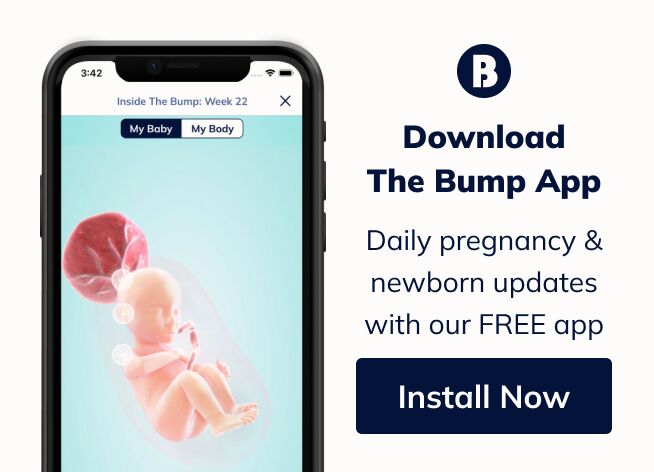Pregnant after 35
 lizok22
member
lizok22
member
AMA and testing-update
Hi all, so I will be 37 when LO is born and been given a ton of tests this pregnancy. First the nt and ultra screen which came up borderline for Down's syndrome. Then the maternit21 which was negative. Now my OB ran a quad screen which also came up high for downs. I thought she was just testing for spina bifida and NtDs. She called me herself to tell me that the maternit21 is only 99% accurate and asked if I wanted an amnio. (I don't). I have worried this
Entire pregnancy and I feel like I cannot just be happy. We still have not told anyone because I am in constant fear. This is also my first pregnancy after 2 losses this year. Can anyone share some experience and can I just trust the maternit21 at this point? I searched online extensively and found a few false positives but no false negatives.
Update: had level 2 ultrasound/ early anatomy scan at 17 weeks and it could not have looked better. No soft or hard markers found and we are having a boy!
Update: had level 2 ultrasound/ early anatomy scan at 17 weeks and it could not have looked better. No soft or hard markers found and we are having a boy!
This discussion has been closed.





Re: AMA and testing-update
You'll get your results in the form of a ratio that expresses your baby's chances of having a chromosomal defect.
For example, you may be told that your baby's chances of having Down syndrome are 1 in 30 or 1 in 4,000. A risk of 1 in 30 means that for every 30 women with this same result, one baby will have Down syndrome and 29 will not. A risk of 1 in 4,000 means that for every 4,000 women with this result, one baby will have it and 3,999 will not. The higher the second number, the lower the risk.
You may also be told that your results are "normal" or "abnormal," depending on whether they are below or above a specified cutoff. For example, some tests use a cutoff of 1 in 250. So a result of 1 in 4,000 would be considered normal because the risk that there's a problem is lower than 1 in 250. A ratio of 1 in 30 would be considered abnormal because that risk is higher than 1 in 250.
Remember that a normal screening result (screen negative) isn't a guarantee that your baby has normal chromosomes, but it does suggest that a problem is unlikely. Likewise, an abnormal screening result (screen positive) doesn't mean that your baby has a chromosomal problem — just that he's more likely to have one. In fact, most screen-positive babies turn out not to have a problem.
(If your baby's nuchal fold measurement is above the 99th percentile for his gestational age, he's also considered to be at increased risk for major congenital heart disease, so you'll be given a special ultrasound called a fetal echocardiogram. If your baby has a heart defect, he'll need to be monitored with regular ultrasounds and delivered at a medical center equipped to handle this condition.)
Results
By Mayo Clinic staffYour health care provider will use your age, race and the results of the quad screen to gauge your risk of carrying a baby who has certain chromosomal conditions or neural tube defects. Other factors — such as your personal or family health history — also might affect your risk.
Quad screen results are given as a probability, such as a 1 in 5,000 risk of carrying a baby who has Down syndrome. Generally, the test is considered positive if the risk is 1 in 250 to 1 in 300.
Keep in mind that a positive quad screen simply means that levels of some or all of the substances measured in your blood were outside the normal range. This can happen for various reasons, including:
If your test results are positive, your health care provider might recommend an ultrasound to verify the baby's gestational age and confirm the number of babies. During the ultrasound, your health care provider will also evaluate your baby's growth, study the placenta and identify possible abnormalities.
The quad screen correctly identifies about 80 percent of women who are carrying a baby who has Down syndrome. About 5 percent of women have a false-positive result, meaning that the test result is positive but the baby doesn't actually have Down syndrome.
When you consider your test results, remember that the quad screen only indicates your overall risk of carrying a baby who has certain chromosomal conditions or neural tube defects. A low-risk result doesn't guarantee that your baby won't have one of these conditions. Likewise, a high-risk result doesn't guarantee that your baby will be born with one of these conditions.
Often, positive test results are an invitation to consider secondary testing. For example:
Your health care provider or a genetic counselor will help you understand your test results and what the results mean for your pregnancy.
1st BFP-8/17/12! Missed Miscarriage discovered @ 8 week US. D&C.
2nd BFP-2/13/13! Blighted Ovum discovered @ 8 week US. Natural miscarriage.
3rd BFP-5/22/13! By early June, progesterone plummeting. Another loss.
August 2013 - started Donor Egg process, but surprise BFP with my own eggs.
Dear Son born 5/28/14